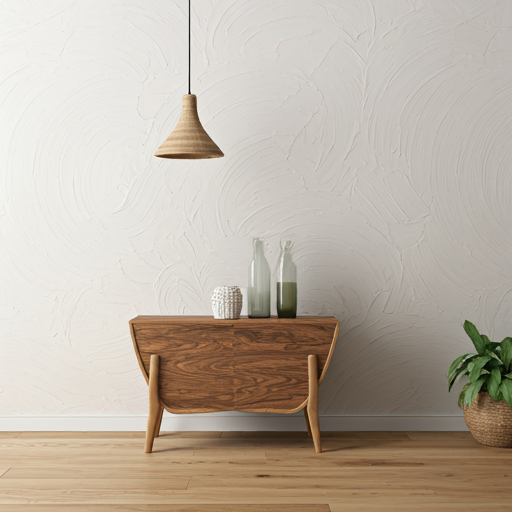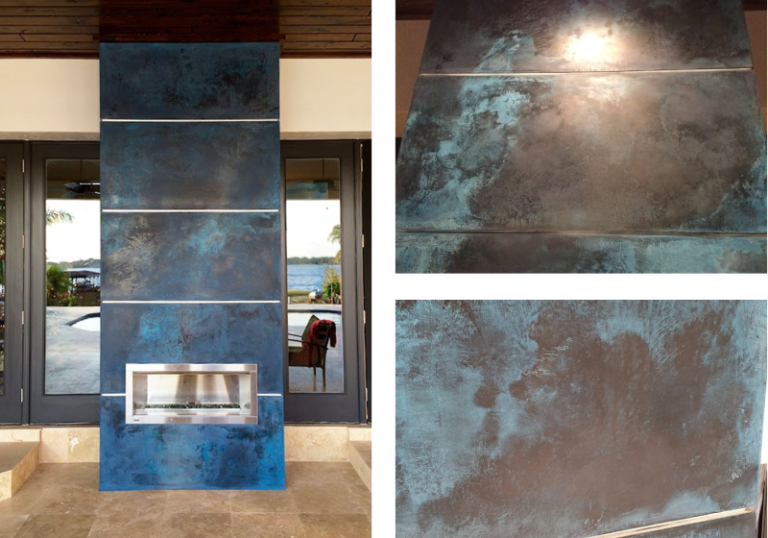7 Effective Ways to Maintain Your Venetian Plaster Walls

The appeal and elegance of Venetian plaster, which is a representation of centuries-old skill and workmanship, speak for itself. You already know this finish is resilient and beautiful if you choose it for your home. Just like any other piece of art, it needs to be carefully maintained to keep its attractive qualities over time.
Here’s a simple guide on how to clean and maintain your Venetian plaster walls. Blending in general methods with a touch of modern wisdom (and a little bit of human common sense!).
TABLE OF CONTENTS
Dusting—The Basics of General Cleaning
With its durability & unmatched beauty, Venetian plaster walls still deserve a light touch & handling.
- Use a microfiber cloth or a feather duster. It’s surprising how much difference this regular upkeep makes—gently wiping down the walls every now and then helps keep that finish glowing.
- Think of it as dusting your favorite piece of art or furniture.
Handling Light Spots—The Little things that matter
Accidents sometimes happen, and whether it’s a small handprint or an unexpected scuff on the surface, you need to handle it with care.
- Damp cloths are your friend. If you spot a small stain or smudge, a lightly damped, soft cloth will usually do the trick. Avoid vigorous rubbing, as that can wear down the delicate layers of plaster.
- For more resilient stubborn spots, try to mix a tiny bit of mild soap with warm water. Just be careful not to overdo it as it can damage the protection coating, and make sure to blot, not scrub. When you’re done, follow up with a dry cloth to avoid watermarks.
Cleaning Products—Less is More
Venetian plaster may be resilient, but it doesn’t like harsh chemicals. Think of it as an old-world finish that appreciates a bit of gentleness.
- Stick to pH-neutral cleaners or a simple soap-and-water solution. If you’re the type to scan labels (and we suggest you do), look for something mild.
- Stay away from anything that sounds aggressive—ammonia, bleach, acids—these will strip away the elegance over time, dulling the finish.
Polished Plaster—A Shine Worth Protecting
If your walls have that polished Venetian plaster look—smooth, almost marble-like—they need a bit more attention to maintain their sheen
- Wax for protection: Polished Venetian plaster often has a layer of wax applied during installation. Over time, this wax can dull. Reapply wax every few years (or when you feel the shine is fading) to keep it gleaming.
- Once applied, buff gently with a soft cloth. Be extra careful—a light hand is all you need to get this done. A little care goes a really long way.
Damage Control—Prevention is Better than Cure
Venetian plaster, while resilient & tough, isn’t really completely invulnerable to physical damage. With the right pressure, a bump from a piece of furniture or a knock against the wall can leave behind a chip or a crack that can be noticeable.
- Be mindful when moving or hanging decorations close to the decorated surface. A helpful tip is to add felt pads to the bottoms of furniture to prevent accidental knocks.
- In the event of a small chip or crack appearing, it is best to handle it sooner rather than later. Remember, a quick touch-up can keep the damage from spreading.
Humidity Control—Your Plaster’s Best Friend
Venetian plaster thrives in balanced environments. While it does well with moisture (which is why you’ll see it in luxurious bathrooms), too much can still be harmful over time.
Proper ventilation is the key in common spaces prone to moisture like bathrooms or kitchens. If you’re not sure about the humidity levels in a particular room, a dehumidifier might be a wise investment to keep the air just right for your walls.
When to Call in the Pros—We All Need a Little Help
Despite your best efforts, your Venetian plaster might need a little professional love & retouching. Whether it’s polishing, patching, or a full restoration, a professional knows how to bring back the original beauty without altering the very essence of your prized finish.
If you’re dealing with a stubborn stain or notice wear and tear, don’t worry—Artesano Craftsmen is here to help. Reach out when your walls need extra care, and let our experts handle the intricate details. After all, your Venetian plaster deserves the very best.
Conclusion
Caring for your Venetian plaster walls doesn’t have to be a daunting task. With regular dusting, gentle spot cleaning, and occasional maintenance, you can preserve their beauty for years to come. By using the right products and being mindful of your environment,
you’ll ensure that your plaster remains as stunning as the day it was applied. And when in doubt, don’t hesitate to call in a professional to give your walls the extra attention they deserve. Remember, a little care goes a long way in keeping this timeless finish looking its best.
FAQs
1. How frequent should I clean my Venetian plaster walls?
Dusting once in a while with a microfiber cloth or feather duster is all it needs to keep that luxurious look. Think of it like wiping down a beloved piece of art—it’s about gentle, regular care.
2. Can I use water to clean small marks?
A soft cloth, lightly dampened with water, will usually do the trick for small smudges or fingerprints. For anything more stubborn, mix in a tiny bit of mild soap. Remember—gently blot instead of scrubbing, and always finish with a dry cloth to avoid water spots.
3. What type of cleaning product should I use?
It is best to consider using pH-neutral products as explain in this article on what cleaning products you should us. The majority of cleaning products can contain chemicals like bleach, ammonia, or anything corrosive which can damage & further deteriorate your venetian plaster covered walls.
4. Any tips for keeping my Venetian plaster polished and shiny?
All Venetian plaster has that polished feature, almost like marble sheen for a reason, but over time, the wax that protects it can start to fade. It’s advisable reapply wax every few years, or whenever you notice the shine dulling. After waxing, buff it gently with a soft cloth—think of it as giving your walls a quick beauty treatment!






